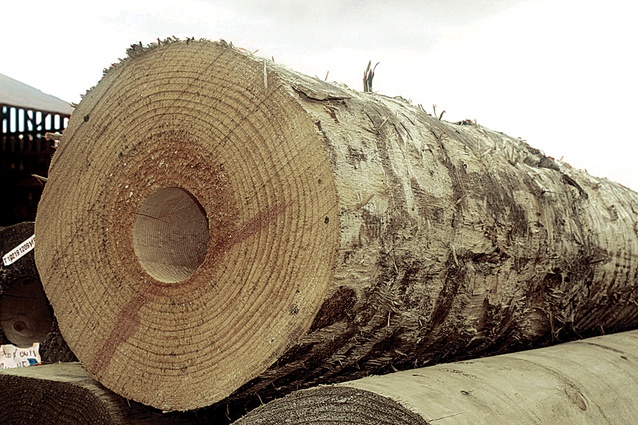Well rounded
The world-first use of a round timber structural system developed by Auckland engineers and a timber producer is attracting interest from around the globe.
Hollow round timber logs are the backbone of what will be New Zealand’s first living building, Te Wharehou o Tuhoe.
The world-first use of this round timber structural system will allow the building, when complete, to withstand a one in 2500-year earthquake event, and achieve a 100-year durability rating.
This month [February] the first round timber piles will be vibrated into the ground at the Tuhoe site, marking five years since mlb Consulting Engineers principal Mark Batchelar had an idea that would shape the future of structural timber engineering using round wood members.
“I was using my water blaster at home and I got a bit close to the cedar. I thought ‘I wonder if you could use the water blasting process to core a log,’” Mr Batchelar said.
After working with timber for 30 years, the structural engineer was well versed in the challenges of using round wood, and timber in general. So when he came up with the idea of coring logs, he pursued it with John Reelick of TTT Timber Products, an established company processing radiata pine logs.
“The strongest part of a round pole is in the outer sapwood layers,” he said.
“Removing the inner core doesn’t weaken the logs.” Mr Batchelar said TTT initially trialled his idea of coring a log with a commercial water blaster.
“It was then we started to see the true potential of this idea,” he said.
“It has taken five years since the first time we sat down and started looking at it. We can now core 10 metres in 45 seconds using purpose made dry curing equipment.”
Together, Mr Reelick and Mr Batchelar developed what is now known as the TTT MultiPole, a radiata pine pole with a hollow core. mlb Consulting Engineers structural engineer Dr Michael Newcombe said the completed Tuhoe Building would showcase what was possible with the new round timber structural system.
“We made a choice to use round timber as much as possible. We used it for the walls, columns, floor and piles,” Dr Newcombe said.
“They take all of the seismic load of the structure, and allow it to withstand a one in 2500-year event.”
TTT MultiPoles, which have been de-barked only, known as ‘uglies’, are used for piles. Instead of utilising traditional piling methods, a hose can be inserted into the centre of the pole for hydro jetting to allow them to be easily vibrated or driven into the ground.
“We anchor the poles into reinforced concrete footings with a reinforced steel bar that goes down the middle of the pile,” Dr Newcombe said. “Post-tensioning bars can also be easily inserted through the centre of the log to provide structural systems normally only available in concrete designs. So effectively what you have is a stretched tendon, which enables controlled rocking with no structural damage.”
Because less processing is involved in creating hollow round timber poles than other engineered wood products, fabrication costs are significantly cheaper. “Removing the juvenile wood core of a log accelerates the drying process, reduces shrinkage cracks, and allows 100 per cent treatment penetration, which increases durability.”
For mlb Consulting Engineers, the Tuhoe Building is just the beginning. “We feel that with this new hollow round product, there is an opportunity to shape the industry in terms of construction, and not just for low-rise buildings. This structural system allows the creation of robust commercial buildings up to ten stories high,” Mr Batchelar said.
“There’s a lot of interest in this, both here and overseas. It is another tool in the tool box for the construction industry.”











